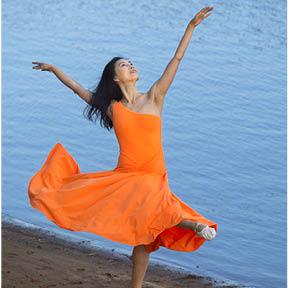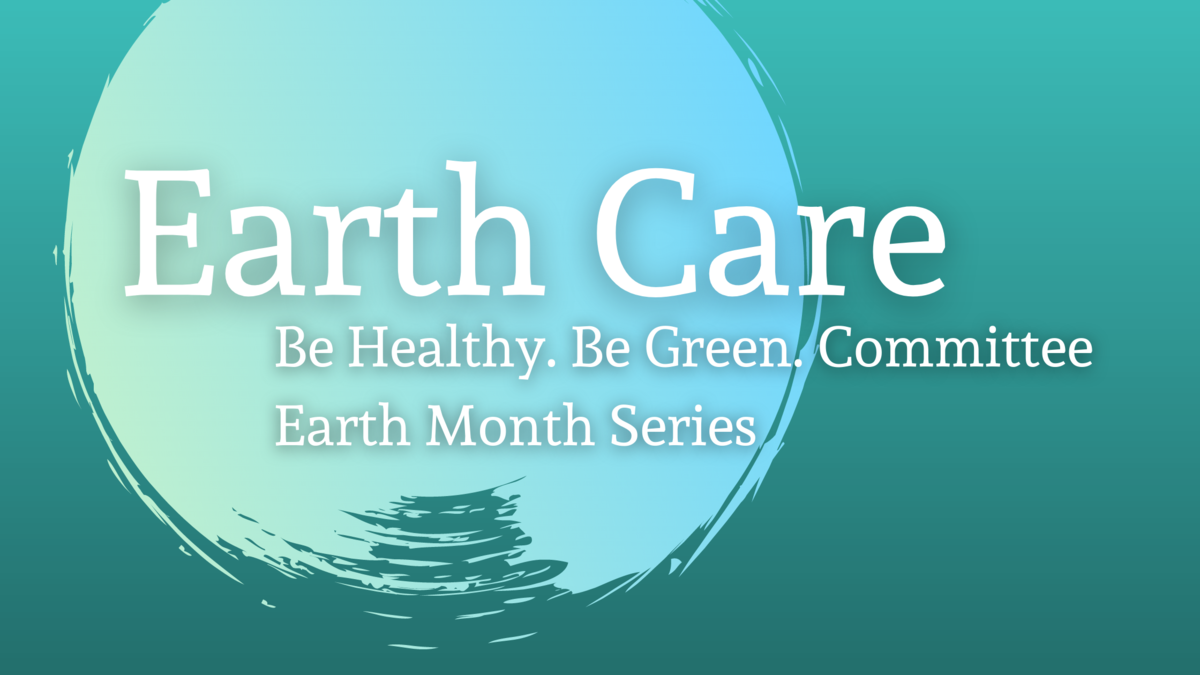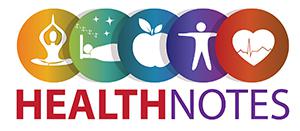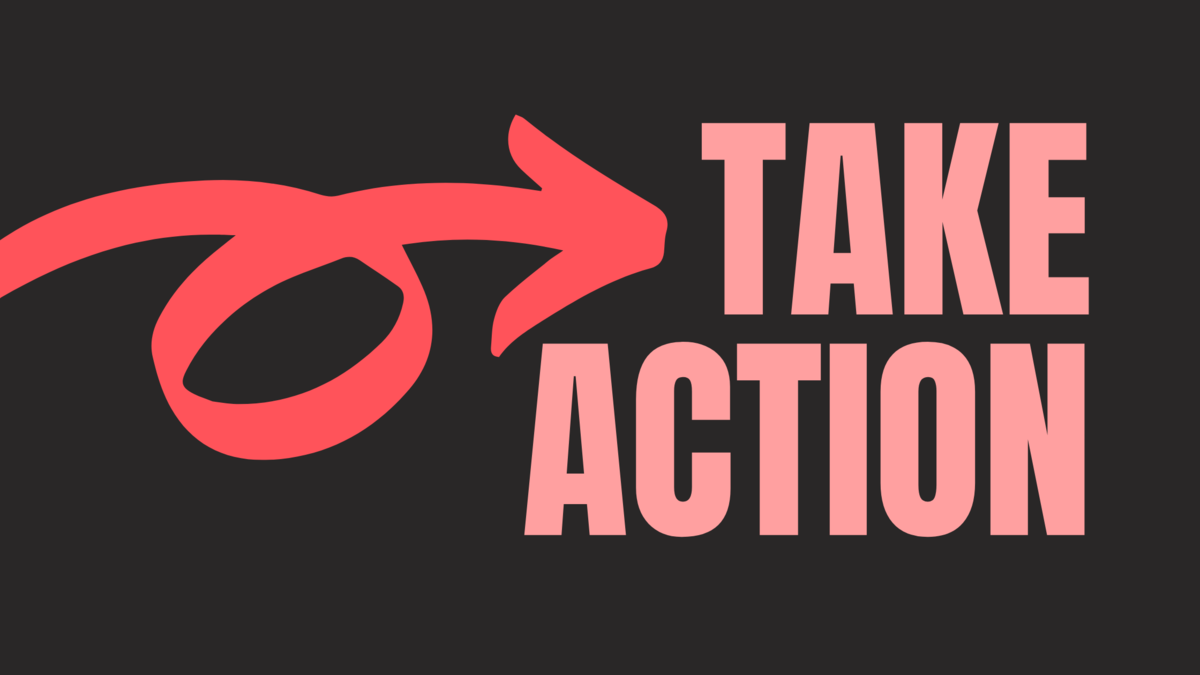|
Thursday, April 29 2021
By. Rev. Lloyd E. Brockemeyer In her book, “Braiding Sweetgrass” by Robin Wall Kimmerer, she pursues the intriguing idea about how living things without a language like humans, communicate what they are. She suggests, if I understand her, that they do this by dance, by the way they immerge from a bulb, send roots spiraling down into the soil, push up through the earth and open to the sunlight, unfold leaves in gradual but beautiful ways and form seeds to repeat this dance of becoming. Perhaps it is somewhat like a mime communicating without words through movement, dancing out thoughts in clear, unmistakable ways. I think dance has been an important and meaningful part of our human experience since creation. Often it has been a part of ceremonial rituals about birth, rites of passage, marriage, death, and many other life experiences. Sometimes it is a pure expression of joy, and at times, an intimate movement of lovers together allowing people to release emotions that they cannot find words to express. Be it modern, ballet, rock and roll, or the "round" dance performed by our ancient ancestors, dance is an expression and sometimes a purposeful attempt to convey to others feelings, thoughts, ideas, hopes, desires, and even the most seemingly intangible of emotional experience. Other forms of human movement are sometimes said to have a dance-like quality including martial arts, gymnastics, cheerleading, figure skating, synchronized swimming, marching bands, and many other forms of athletics. The TV show, “Dancing With the Stars” and other similar ones, have popularized a certain form of dancing today. It is a competition of style but still holding basically to accepted forms of ballroom dance. The professionals are very creative in what they are able to perform. In the early nineties, Mary dragged me to a ballroom dance class some of her friends were attending. After a time, we both got hooked so began taking classes and joined a dance group, the Congenial 100, that had a long history, actually beginning with people from St. Paul’s Church. We enjoyed this group for many years. Each month there was a theme chosen with appropriate decorations, and a meal was served prior to the dance time. Among many highlights for me was dancing with a lady on her 100th birthday. We enjoyed the fellowship of many friends, and the time spent together as a couple was special. At a number of wedding dances we were the last couple on the floor when eliminated by age. Surgeries and health issues ended our dancing a few years ago. Dance can be a special form of worship. The Ark of the Covenant was a special sign of God’s presence so after a long absence it was finally brought into Jerusalem. The Bible tells that wearing a linen ephod, David danced before the Lord with all his might, while he and all Israel brought up the ark of the Lord with shouts and the sound of trumpets. (2 Samuel 16: 14) In our worship at St. Paul’s we have sometimes used liturgical dancers to help interpret a scripture reading or a hymn. Dance was also used to express joy at a time of victory as described also in Samuel, “As they were coming home, when David returned from striking down the Philistine, the women came out of all the cities of Israel, singing and dancing, to meet King Saul, with tambourines, with songs of joy, and with musical instruments.” (I Samuel 18:6, Standard Version) The hymn. “Lord of the Dance”, portrays Jesus life verse by verse with the chorus between them, “Dance, then, wherever you may be, I am the Lord of the Dance, said he, And I'll lead you all, wherever you may be, And I'll lead you all in the Dance, said he.” So we might ask ourselves what kind of dance are we encouraged to engage in. For Jesus it was a dance of self sacrifice and love. Are we called to any less that that? Wednesday, April 28 2021
Be Healthy. Be Green. Committee Earth Month Blog Series We have a tendency to think that solutions to our problems will be found in new technologies. In some ways, that’s probably true, but there are challenges. Adopting new technologies requires money and access that not everyone has. Additionally, “green” technologies are not without their own environmental impact, as they are also made from mined and manufactured materials. Ultimately, we know that our planet can’t sustain our consumption at the rate that we’re going (we’d need 1.6 planets to support humanity’s demands--check out Earth Overshoot Day). It’s time for change. Some St. Paul’s members have found themselves in the position to invest in newer “green” technologies in their Earth-care journey: Photo: the Oakland’s unobtrusive solar panels Barb and Jerry Oakland - Solar Panels Jerry writes: In June, 2020, we had Eagle Point Solar of Dubuque install an array of 23 solar panels on the east and south slopes of our home. I had attended a presentation by Grow Solar Linn County and became part of the group buy, so purchase costs were reduced as more consumers made commitments. I always have had an interest in conservation methods, beginning with gardening, recycling and composting. I have built a rain garden and installed a rain barrel. Solar energy is clean and requires no maintenance or energy on our part. It seemed the next logical and ‘right’ thing to do. The most electricity the system generated on any one day was 46.88 kWh on June 16th. In ten months it has generated 5.67 MWh. The system generates electricity which goes to the electric company. So, even though the sun was shining brightly after the derecho, we had no power at our house for several days. My bill for electric services from March 11 – April 13 last year was $168.05. This year for the same period is $12.47. In addition to the sale of the electricity generated, which reduces monthly electric bills, the federal and state governments provide tax credits to partially offset the purchase price. And the solar panels should increase the value of our house. Visit the Grow Solar website to sign up for one of the upcoming “Solar Power Hours” on Zoom to learn more about solar and group buys. If you’re not in a position to go solar yourself, you might consider helping make it easier for other Iowans by contacting your representatives about House File 221. Read about it on the Iowa Interfaith Power & Light website. Photo: the Twedt-Ball’s hybrid car charging in their driveway Karla and Clint Twedt-Ball -- Hybrid Car Karla writes: Four summers ago, Isaac was getting ready to turn 16 and Clint and I were ready to turn in our chauffeur’s license and let Isaac drive himself to his multitude of activities, including 5:30 a.m. swim practices. Ending our chauffeur days meant adding a third car to our fleet, something we were loath to do. But practicality was clearly winning us over. [...] That was the summer of 2017, and electric cars were emerging on the used-car market. We decided that if we were going to add a third car, we should focus on fuel efficiency. Clint did some research. Teslas were out of our price range, and we were also concerned about the availability of charging stations with an all-electric car. We decided to look for a gas-electric hybrid, so that the gas would provide backup when the electric charge was used up. We found a low-mileage 3-year old Chevy Volt that had mostly sat in a California garage. We named it Franklin (double homage to Benjamin, namesake of Annika’s middle school and the founder of electricity!) Depending on temperature, it gets 20-45 miles per charge, enough to cover all our miles in a typical day of driving to work, meetings, and activities. Every night, we plug it in. We live in a 1940 house with a tiny garage (better for storing bikes than cars), so we keep the cord outside and it works just fine! We could invest in a higher-voltage charging station to speed the recharging time, but overnight is sufficient to fully charge the car. We can go weeks at a time without using much of the gas, depending on our driving patterns. Advantages? Depends on who you ask! Isaac loves that the 0-60 time on an electric car is crazy fast because it doesn’t shift gears like a gas engine. I love the fuel efficiency (and the fact that it’s the first car I’ve ever had with heated seats). Clint loves all of the above! Disadvantages? There are a few, but I think all of these are either solved with current models or will be solved very soon. Ours is an early-model electric hybrid, and if the temperature is above 40, it is hard to get the heat to turn on for some reason! (Thank heavens for heated seats…) I assume that this is not a problem for newer hybrids. Also, it’s not intended as an electric vehicle for long distances (yet again… older model). And the last disadvantage is that as we discovered recently, maintenance can be expensive because the technology is new and the labor costs are high – and the Chevy dealer is clearly not used to working on electric vehicles. That said, the technology has improved by leaps and bounds since 2014, and it is our hope to buy a 100% electric vehicle the next time. A oft-heard concern is the scarcity of electric charging stations, but this investment in infrastructure has already started, and I imagine it will resolve quickly. I’m looking forward to a future cross-country, all-electric trip! See a map of electric vehicle charging stations in Cedar Rapids: PlugShare.com Thank you Jerry and Karla for sharing your experiences! Have you adopted any “green” technologies? Tuesday, April 27 2021
By: Judy Fitzgibbons, MS, RD, LD During January and February of 2020, I led the Spirited Living series at St. Paul's during which we explored seven practices that I consider the foundations of good health. Group members asked me to offer occasional reminder nudges. Mary Horn, St. Paul's parish nurse, thinks more of you might enjoy my periodic nutrition and health musings. This is the first to go into the Health Notes of the printed version of The Outlook and onto the weekly eblast blog page. I pray you find it interesting. Recently, I had the opportunity to attend a webinar about caffeine and health. A study published in February 2021 by the American Heart Association found, unexpectedly, lower rates of heart failure in people who daily drank up to 3 cups of coffee with caffeine. (We call that “leaded” in our house.) In recent years caffeine has popped up in other foods and can be purchased in powdered and tablet form as well as part of many supplements on the internet. These are the forms that can be dangerous. Still, most Americans get the bulk of their caffeine from coffee and soft drinks. The presenter, a PhD toxicologist, discussed the findings of a very large and well done, systematic review of caffeine research. I thought you might find some of her points interesting. How much caffeine is too much? Here's a rule-of-thumb list of common caffeine sources you can use to see where your caffeine intake lands. Note serving sizes: Portion Caffeine Caffeine does cause heart palpitations, higher blood pressure and greater alertness (or insomnia) in some people, but not everyone. This may be related to genetics, according to newer research. Caffeine is a mild diuretic, sending us to the bathroom, but it does not cause dehydration. Other body systems compensate. Caffeine, in moderate amounts (400mg or less) does not contribute to bone thinning, fractures or falls. If that morning or mid-afternoon cup of coffee or tea helps perk you up, enjoy it. It may protect your heart. Just be cautious about loading it down with high-calorie extras. Note: I am sharing Spirited Living ideas 2 to 4 times a month. If you would like to receive all of those by email, send me a note at: judy@fitzgib.net.
Posted by: Judy Fitzgibbons, MS, RD, LD Registered Dietitian, retired AT 02:56 pm
| Permalink
| 0 Comments | Email
Wednesday, April 21 2021
Be Healthy. Be Green. Earth Month Blog Series On average, Americans spend 18 days in a car per year--eight hours and 22 minutes per week (source). It goes without saying, we are car people. But what does that mean for our planet? From the EPA: In 2019, greenhouse gas emissions from transportation accounted for about 29 percent of total U.S. greenhouse gas emissions, making it the largest contributor of U.S. greenhouse gas emissions. In terms of the overall trend, from 1990 to 2019, total transportation emissions have increased due, in large part, to increased demand for travel. The number of vehicle miles traveled (VMT) by light-duty motor vehicles (passenger cars and light-duty trucks) increased by 48 percent from 1990 to 2019, as a result of a confluence of factors including population growth, economic growth, urban sprawl, and periods of low fuel prices. (source) Barry Saxifrage, a Canadian columnist writing in Canada’s National Observer, noted that understanding our emissions impact is difficult because CO2 is invisible. If we are talking about plastic pollution, we can see the effects. We can see the piles of plastic litter clogging waterways and videos of choking animal life. But despite being greater than our plastic pollution, carbon is usually “out of sight, out of mind” for us. Visualizing CO2 Saxifrage offers the idea of visualizing CO2 as plastic straws. A typical plastic straw weighs less than half a gram, so he used two straws to represent a gram of CO2. He wrote, “Polluting the average amount seemed reasonable to me until I started to ‘see’ that CO2 as equal to littering 420 plastic straws every kilometre [0.62 miles]. At highway speed, the average Canadian car litters climate pollution at the rate of 15 plastic straws' worth shooting out the tailpipe — every second.” It’s worse for air travel: “The average airline passenger emits around 25 gCO2 — a fistful of 50 plastic straws worth — every second.” (source) Yikes. We’re such a car culture. Our cities are designed for cars. Everything is spread out to make room for parking. Public transportation is limited. For most of us, cars are default. As for myself, I don’t feel I have a safe or practical alternative, as I am usually toting a child and I have pain issues that prevent me from walking on paved surfaces for very long. I am nothing but understanding as to why, with things as they are, most people are tied to their cars. But some of our church members have found that they can, indeed, make car-free commuting a part of their lives. Photo: courtesy of Bruce Nesmith Bruce Nesmith Bruce Nesmith is a Professor of Political Science at Coe College, co-founder of Corridor Urbanism, and writer of his blog, Holy Mountain, where he comments on public policy, place, and social relations. I also know Bruce as a walker. He’s been a pedestrian for a long time, and continues to walk to work. I know this because, one, I’ve seen him, and two, he writes about it. In his latest post on Holy Mountain, he wrote, “Cars are seductive--for their convenience, for their accessories, and I guess for a certain type their power. I chose differently long ago, and I'm glad I did.” He continues expounding on the benefits of walking. Walking is an excellent time to clear the head and process thoughts. “A time spent moving at a human pace, being truly able to see things and people around me, without the onrush of stimuli in and out of my car, is good for my mental health.” It’s good for social relations (getting to know your neighborhood) and observing the natural world. Plus, it’s good exercise. “I need to note that my commuting mode is not strictly car-free, and my core motivation is hardly ethical. I simply enjoy walking, or riding my bicycle, over driving. I may well, though I hope I don't, counterbalance the environmental benefits of my commute in some other sector of my life,” Bruce wrote.
John Nollsch One of the first things I understood about John Nollsch upon getting to know him is he rides a bicycle. Everywhere. To St. Luke’s where he works as a social worker. Across Iowa while on RAGBRAI. I asked him about his story. He said, “Routine bike riding for transportation has been part of me at least since grade school. In junior high I followed the path of my older sister and I biked to Lake Macbride with friends for the first time and I was sold on longer bike-rides for fun. My first RAGBRAI was XII in 1984 and I’ve done maybe 17 of them, maybe more, I lost count.” “The environment wasn’t my first thought as a kid but it certainly is now, along with keeping fit and not wasting money on unnecessary fossil fuels. I drive a car when I need to, but it seems most Americans have a different definition of ‘need’ than I do,” said John, whose car’s bumper sticker reads “My other car is a bicycle.” Bicycling has afforded blessings: “Probably my favorite biking situation is RAGBRAI with a good friend very early in the morning & very quiet & seeing the sun rise above the corn. It’s not the kind of RAGBRAI time most people hear of but it is down-right spiritual.” ••• Short-Distance Vacations Something that Jonathan and I have done in the last few years is to take our vacations a short distance away. Far away enough that we are definitely not home, but close enough we can get there in a few hours. In fact, the last two years, we’ve gone only one hour away to a cabin at Backbone State Park. Three years ago, we stayed in an eco-friendly cabin (solar powered, composting toilet, etc.) just a half a day away in Wisconsin. We can maximise our vacation time by spending less time getting there. This is not to say we’re never going to take a cross-country drive, but we’ll take them less often. Photo: cabin at Backbone State Park Thursday, April 15 2021
Be Healthy. Be Green. Committee Earth Month Blog Series Whether we consider ourselves into fashion or not, we all wear clothing. Our skin is constantly in contact with this material that protects our bodies and lets us express who we are. The impact of the clothes we choose goes beyond a fashion statement, because they came from somewhere, were made by someone, profit someone, and go somewhere after we’re done with them. The fashion industry has huge problems, including unsafe labor conditions, unfair wages, pollution from dyes and chemical treatments, and waste. 12.8 million tons of clothing are sent to landfills in the US every year. --Ayesha Barenblat, founder at Remake Whatever your style, maybe you will find some inspiration in the following examples. Photo: headshot courtesy of Emily Stochl. Activist The True Cost film was made after the collapse of the Rana Plaza garment factory in Dhaka, Bangladesh, which killed over 1,130 people and injured 2,500 more on April 24, 2013. The collapse drew attention to the working conditions of garment workers around the world. The film has been deeply impactful for many who were prompted to join the conscious fashion community. (Including myself! Jonathan and I saw the film when Emily teamed up with Czech Village vintage shop Found + Formed to facilitate a screening of the film at Cedar Rapids Downtown Library.) As creator and host of Pre-Loved Podcast, she interviews makers, sellers, activists, and more on all things second-hand and vintage fashion. She’s interviewed major parties in the secondhand space like Depop and Buffalo Exchange, as well as vintage staples like Amarcord Vintage and A Current Affair, and vintage and secondhand sellers from around the world, including: Paris; Cancún; Accra, Ghana; Lima, Peru; Helsinki, Finland; Brussels, Belgium, and even Cedar Rapids, Iowa. She’s also an Advocacy Manager with Remake, “a community of fashion lovers, women rights advocates, and environmentalists on a mission to change the industry’s harmful practices on people and our planet,” through education, advocacy, and transparency. (source) Emily constantly pushes toward fair pay for garment workers using her online platforms to share information about legislation, petitions, and other campaigns we can all get behind. Honestly, she makes it easy for the rest of us. One thing I really love about Emily is her passion is contagious, and she makes caring exciting. You can find Emily’s blog and info on Pre-Loved Podcast at http://brumedaisy.com/ . Pre-Loved Podcast can be found anywhere you listen to podcasts. Photo: Portrait of Rachel Maker, photographed by Taylor Webster Maker One of Rachel’s popular designs is the “Respect Our Mother” tee, which you can find at Found + Formed, 65 16th St SW, in Czech Village. Photo: “Respect Our Mother” t-shirt, courtesy of Rachel Maker Photo: St. Paul’s first mending party in 2019 Mending Why mend? Mending is an act of valuing the things that we have. It’s an act of gratitude, of recognizing the worth of the material, the human labor, and the resources that went into making them. Taking care of our things and extending their useful life means we can buy less, and save water, carbon emissions, landfill space, and money. When I darn a well-worn favorite shirt, I’m also preserving its stories--and mine. If you’d like to get in on the action, keep an eye out for future mending parties at St. Paul’s, and in the meantime, check the public library for books on mending, or dig out your sewing supplies and get practicing. Photo: Stephanie’s mended toddler jeans Stephanie Heifner is a lay member of St. Paul’s and co-chair of Be Healthy. Be Green. Committee. Besides mending Charles’ pants, Stephanie has embraced conscious fashion by shopping secondhand when possible and learning to sew her own clothes. Wednesday, April 14 2021
April is Earth Month, with Earth Day on April 22. The purpose of naming this time is to celebrate this amazing world that is our home, and to drive positive action for the care of our planet. Why does this matter to Christians? The Bible begins with the story of Creation. Our Creation story tells us that what God created, God calls good. I believe humans are meant to be stewards of the Earth, not conquerors, not owners: “The earth is the Lord’s and everything in it, the world and its inhabitants too.” Psalm 24:1 (CEB) John Welsey, the founder the Methodist movement said in a sermon: The great lesson that our blessed Lord inculcates here…is that God is in all things, and that we are to see the Creator in the glass of every creature; that we should use and look upon nothing as separate from God…but with a true magnificence of thought survey heaven and earth and all that is therein as contained by God in the hollow of his hand, who by his intimate presence holds them all in being, who pervades and activates the whole created frame, and is in a true sense the soul of the universe. (Sermon 23, “Upon Our Lord’s Sermon on the Mount, III” I.11, 1748) Faithful Earth-Care If nothing is separate from God, we ought to regard the environment, the creatures in it, the materials we extract, and the possessions we own with gratitude. And let us not forget the people. There are numerous scripture texts that instruct followers to care for the most vulnerable people--widows, immigrants, “the least of these.” (Matthew 25:31-40, Deuteronomy 24:19, to name a few.) In our time, some of the most vulnerable populations are those impacted the most by climate change and pollution. Those who are or will become climate refugees. Those subject to environmental racism, such as people of color whose neighborhoods are located next to industrial pollution. Therefore, Christians must respond to issues of environmental justice and the climate emergency. In this blog series, I will be highlighting people from our church or community who have found ways to be earth-friendly in ways that coincide with their passions and ways of being. Beyond lists of do’s and don’ts, and tips and tricks, I hope you will be encouraged to look for places where care of the earth intersects with your areas of interest or the things you already do in your life. Look out soon for posts to come on Earth-Care x Fashion, Travel, Technology, and more. Stephanie Heifner is a lay member of St. Paul’s UMC and co-chair of Be Healthy. Be Green. Committee. Thursday, April 08 2021
Many of us struggle with sadness or depression, especially when so many of the things that have brought us satisfaction and happiness end either because of normal life changes or the pandemic. Maybe you have lost something like your health, or your job, or a special person or the ability to participate in activities that you used to enjoy. Or maybe you have no explanation for the feelings you have. I ran across this list of suggestions for things to lift your spirits and thought it was worth passing along.
Remember that God loves you so keep looking forward. Open the Bible and see what those open pages provide for you. That small seed of hope and optimism is the first step toward happy. Thursday, April 01 2021
The Good Friday service “Stations of the Cross” program, created by A Sanctified Art, highlighted connections between the crucifixion of Jesus Christ and the unjust murders of Black people like Emmett Till, and the pain of Jesus’ mother Mary and the pain of other mothers who have lost their children to violence. Four weeks ago, this same material was used at the online Women’s Days Apart: Again & Again retreat, organized by UMW unit leadership (including me) and hosted on Zoom. Unit Education Coordinator Genne Yarne researched and presented the story of the killing Emmett Till, the innocent 14-year-old Black boy who was tortured and murdered in 1955 after he was accused of offending a white woman in her family’s grocery store. Deb Streff, unit Social Action Coordinator, presented the “Stations of the Cross,” using the same base material as the Good Friday Service but adapted to our use on Zoom with various additions of art and information. We acknowledge that racial injustice is not a relic of the past, but ever-present today. As a follow-up to the retreat, we, the organizers, challenged participants to choose an action to complete by Easter Sunday. As for myself, I chose a few actions. One was to visit the African American Museum of Iowa with my family to see their latest exhibit about activism. The other was to make a donation. I chose The Loveland Foundation, which funds therapy for Black women and girls. I will continue to take steps toward educating myself and supporting racial justice and anti-racism. PRAYPray for God to open your eyes, heart, and mind to the realities of racism. Pray for those harmed by racial injustice. Pray for our church, community, country, and world, to change our ways towards justice, and for healing and reconciliation. READRead a book on the United Methodist Women’s Reading Program book list (https://www.unitedmethodistwomen.org/readingprogram), on your own, or join a book club (contact Nancy AntonJensen). Read White Fragility: Why It's So Hard for White People to Talk About Racism by Robin DiAngelo, a book discussed by Deb Streff in her “Stations of the Cross” presentation. LEARNRead the Racial Justice Charter created by UMW: https://www.unitedmethodistwomen.org/racialjusticecharter Visit The General Commission on Religion & Race website to learn about their work holding the United Methodist Church accountable in its commitment to reject the sin of racism in every aspect of the life of the church, and to find many resources for further learning. https://www.gcorr.org/ DOShop at Black-owned businesses. Search online with the name of your city plus “black business”. (Here’s a list of area Black-owned restaurants: https://littlevillagemag.com/black-owned-restaurants-in-the-iowa-city-cedar-rapids-area/ ) Influence your circle, social club, workplace, or church programming to hire Black speakers and read Black authors, or to do a study on racial injustice. Follow Advocates for Social Justice on Facebook. Watch their page for events and requests for action. The mission of ASJ is to create social, political, and environmental change within the Cedar Rapids community, prioritizing the objectives of the #BLM movement. https://www.facebook.com/ASJBLM GOVisit the current “Unwavering: 21st Century Activism” exhibit on activism and protest. African American American Museum: https://blackiowa.org/ 55 12th Avenue SE, Cedar Rapids, IA 52401 (319) 862-2101 CONTRIBUTEDonate to the Innocence Project, highlighted in the “Stations of the Cross” program--the organization working to exonerate wrongly convicted individuals through DNA testing and reforming the criminal justice system. https://innocenceproject.org/ Donate to the Advocates for Social Justice, whose mission is to create social, political, and environmental change within the Cedar Rapids community, prioritizing the objectives of the #BLM movement. https://www.asjblm.org/ Stephanie Heifner is a lay member of St. Paul’s UMC and serves as the Spiritual Growth Coordinator for the St. Paul’s United Methodist Women unit. She also facilitates Create Night and is co-chair of Be Healthy. Be Green. Committee. She can be contacted at stephanie.heifner@gmail.com . |










